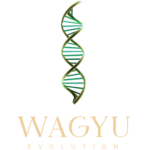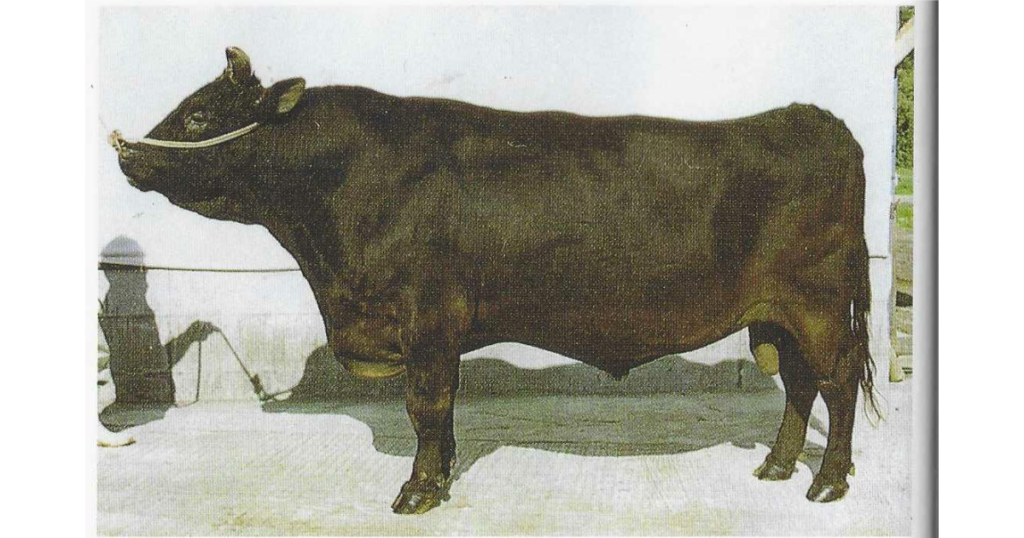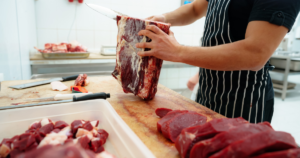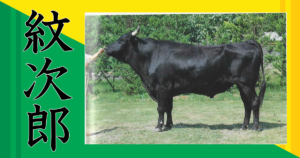No.20 Hirashige: A Representative Bull of Tottori
Table of Contents
* Note: This is not a direct translation of Kenichi Ono’s “Top 100 Famous Beef of Japan [Revised Edition]” but a summary that was written using it as a direct source.
Early Life
“No. 20 Hirashige” is a renowned bull that carries the bloodline of “Kedaka,” a representative sire bull of Tottori Prefecture. As a sire bull of the Kedaka lineage, it is currently the most prosperous bloodline.
No. 20 Hirashige was born on April 15, 1974, at the farm of Mr. Yukihito Kunii in Chizu Town, Tottori Prefecture. Both the sire and the dam’s sire were of the Kedaka line, making it an inbred sire bull, and its quality was recorded as being exceptional. Afterward, under the care of Mr. Tatsumi Yamada, who was famous for raising the Kedaka line, it was put into use at the Kamibeppu Breeding Station in Kimotsuki District, Kagoshima Prefecture, from April 1976.
Like many other famous bulls, No. 20 Hirashige also went through a long period of five years without receiving due recognition. During this time, in 1979, its indirect test was completed. The results showed an average carcass weight of 352 kg, a daily gain (DG) of 0.81 kg, a marbling score of +3.6 (under the old method), and a loin eye area of 44 cm².
Compared to its later performance, the DG happened to be lower than expected. As a result, it was overshadowed by the appearance of the famous Hyogo line bull “Chiyofuku” (sire Anmidōi, DG 0.94 kg, marbling +3.7), and it wasn’t until around 1983 that No. 20 Hirashige began to receive its rightful evaluation. This happened when it was registered as a breeding bull and received a score of 84.7 points, which was the highest evaluation score in Japan at that time.
Finally, by around 1985, No. 20 Hirashige’s reputation became firmly established, and it also proved to have an excellent compatibility with Chiyofuku, making it widely used for both fattening and breeding across the country. As of 1995, over 75,000 calves had been registered, marking an outstanding production record nationwide. After retiring from active service, No. 20 Hirashige passed away from old age on December 15, 1993, at the age of 19 years and 8 months, having lived a long life
Features
Strengths: Body length and growth, Quality (skin and coat), Longevity and robustness, Grazing suitability, Temperament, Reproductive ability
Weaknesses: Loin eye area, Lacking in facial features, Hooves and joints, Not symmetrical, Shoulder thickness. Marbling in the thigh
The most notable feature of No. 20 Hirashige’s appearance is the very short and non-protruding horns. Additionally, the excellent body length is a significant strength, making it particularly favorable for easy calving as a breeding cow. As evidenced by its survival to the age of 19 years and 8 months, its offspring also tend to be long-lived, highly fertile, and good at raising calves. In regions where the Itosakura line is predominant, it may be necessary in the future to improve the breed using the Hirashige line.
On the other hand, a weakness of Hirashige is the small loin eye area and the lack of a well-balanced physique. Bulls that were well-matched with Hirashige, such as Chiyofuku, Tadayasufuku, and Kinmizuku 9, generally had larger loin eye areas and better body conformation, suggesting that bulls with broad shoulders like those in the Yasufuku line would be ideal breeding partners.
Pedigree Background
No. 20 Hirashige’s sire and dam’s sire, Kedaka, was a sire bull produced in the 1950s, which can be considered a root of the Wagyu breed. Kedaka, originally of the Eiko line, became widely known across Japan as the progenitor of the Kedaka line due to its unique phenotype.
No. 20 Hirashige was bred to strengthen the Kedaka bloodline and enhance its qualities. Additionally, his maternal grandmother, No. 10 Hirashige, was also a high-value cow produced through inbreeding in the Kōryū line of Tottori, making her a bull with exceptionally high breeding value.
The birthplace of No. 20 Hirashige, Chizu Town in Tottori Prefecture, is a region focused on maternal line selection. The maternal line’s offspring, which includes the Shintakafuku and Yasufuku lines, have shown consistent performance.
Major Successor Bulls
Bulls with No. 20 Hirashige as the Sire:
- Shigeru Higashihira (Fukushima Prefecture)
Before No.20 Hirashige gained popularity, Shigeru Higashihira, used in Fukushima Prefecture, was widely recognized as the top bull of the Kedaka line in Japan. This bull is an inbred bull produced by breeding Dai 20 Hirashige with the Kedaka-line female cow “Shinobu” from Fukushima Prefecture. Shigeru Higashihira’s younger brother, Shinobuhirashige, is also currently in use.
This bull is known for its excellent midsection growth, black coat, short horns, and good weight gain. However, it tends to produce cattle with somewhat lighter marbling (plaza-shimi) and slightly narrower loin eye areas. The traits of the Hirashige line are well inherited, and with a breeding plan that recognizes these shortcomings, it is possible to stably produce high-quality cattle.
- Dai 33 Hirashige (Livestock Improvement Association, Morioka)
Dai 33 Hirashige was unfortunately not selected in the 1993 indirect test, but the few offspring it produced before being culled have achieved excellent results. The performance of fattening cattle with their deficiencies, such as narrow loin eye areas and narrow shoulder widths, corrected by the maternal side, has been particularly noteworthy. It is judged that both the growth and meat quality of these cattle have reached the level of famous cattle. It is recommended to preserve the well-built offspring.
- Dai 5 Hirashige (Kagoshima Prefecture)
Dai 5 Hirashige is an early successor of Hirashige, widely used in Kagoshima and Fukushima, among other areas. This bull excels in growth and produces robust offspring, but it tends to have narrow shoulders and poor body conformation, necessitating the maternal side to correct shoulder width.
Breeding Considerations & Recommendations
Pay attention to the loin eye area and body symmetry:
The bulls from the Hirashige line tend to have a narrower loin eye area and less symmetrical bodies (long torso). Therefore, it is important to focus on improving these aspects in the field. Bulls with broad shoulders from the Yasutadoi line, Yasufuku line, or Itozakura line are considered good matches.
Consider maturation rates:
Although Hirashige-line cattle show good growth, they are often mistaken as being early maturing. However, compared to the Itosakura line, the Kedaka line, which Hirashige belongs to, tends to mature later. Care should be taken not to reduce the age at slaughter too much, as this could significantly lower meat quality.
Balance in breeding:
Over emphasis on the Itozakura line can lead to issues such as skeletal abnormalities and reduced growth. Therefore, it is advisable to balance improvements by also using the Hirashige line.
Ideal Breeding Model:
- Hirashigekatsu × Chiyofuku or Yasuhira
- Tohirashige × Yasufuku 165-9
- Hokoku 7-8 × Shigeshakura
References
小野健一. 日本名牛百選〔改訂版〕(pp.59-76). 肉牛新報社.




